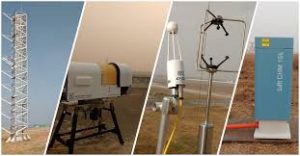Winter Fog Experiment:

The Winter Fog Experiment (WiFEX), has completed a remarkable milestone of ten successful years of dedicated research into North India’s dense winter fog.
- It was launched in the winter of 2015 at Indira Gandhi International Airport (IGIA), New Delhi.
- It was led by the Indian Institute of Tropical Meteorology (IITM) under the Ministry of Earth Sciences (MoES), with support from the India Meteorological Department (IMD) and the National Centre for Medium Range Weather Forecasting (NCMRWF).
- WiFEX is one of the world’s few long-term open-field experiments focused solely on fog — an elusive winter hazard that regularly disrupts air, rail, and road transport across the Indo-Gangetic Plain.
- The objectives of the Winter Fog Experiment (WiFEX) are to develop better now-casting (next 6 hours) and forecasting of winter fog on various time and spatial scales.
- To help reducing fog’s adverse impact on aviation, transportation and economy, and loss of human life due to accidents
- WiFEX scientists have deployed advanced instruments, micrometeorology towers, ceilometers, and high-frequency sensors to collect detailed data on temperature layers, humidity, wind, turbulence, soil heat, and aerosols — building an unmatched dataset that reveals how dense fog forms and disperses.
- These insights have powered the development of a high-resolution (3 km) probabilistic fog prediction model, which now stands among the region’s most advanced tools for operational forecasting.
- This model can reliably predict when fog will begin, how dense it will be, how long it will last, and when it will clear — achieving more than 85% accuracy for very dense fog (visibility below 200 meters).




